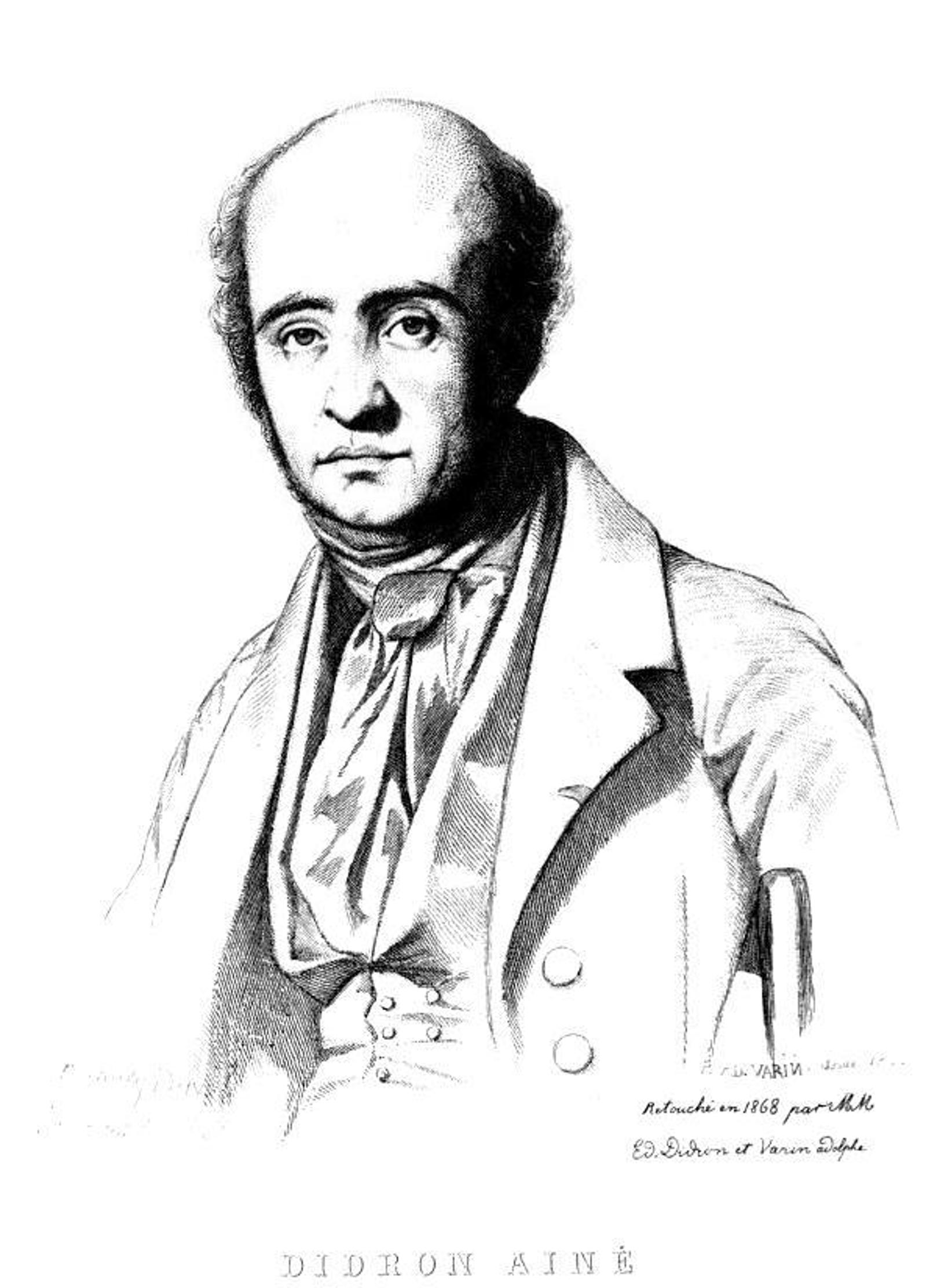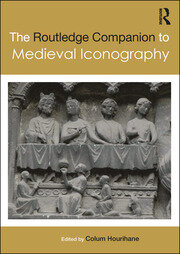Steven Avery
Administrator
Probably error - Panselenus
Elliott (1982) p. 75

Dionysius is, or was, a celebrated calligrapher in the Rossico monastery; he was originally a private monk of the σκήτη of St. Anna; he copied the treatise of Pauselenus (sic) about Dionysius of Agrapha at the request of Pappa Macarius for M. Didron. It is possible that he is mentioned in that work.
==========
Adolphe Napoléon Didron (1806-1867)
https://en.wikipedia.org/wiki/Adolphe_Napoléon_Didron
Adolphe Napoléon Didron (1806–1867) was a French art historian and archaeologist.
In 1839, he visited Greece for the purpose of examining the art of the Eastern Church, both in its buildings and its manuscripts. In 1844, he originated the Annales archéologiques, a periodical devoted to his favorite subject, which he edited until his death. In 1845 he established at Paris a special archaeological press, and at the same time a stained glass factory. In the same year he was admitted to the Légion d'honneur.[2]
==========
(more on this Elliott page to look at.)
===========
Where did Elliott get the info? And/or
Biographical Memoir
Fac-Similes
"agrapha" "panselenus"
===========
Biographical Memoir (1859)
===========
Fac-similes of Certain Portions of The Gospel of St. Matthew, and of the Epistles of Ss. James & Jude (1861)
Constantine Simonides
https://books.google.com/books?id=XQn30Qr2OcoC&pg=PA33
===========
Check Lykourgas German
https://books.google.com/books?id=3...EAI#v=onepage&q="pauselenus" "didron"&f=false
======
1861
https://galton.org/books/vacation-notes-1861/vacationtourists02galtrich.pdf
===========
Researches in the Highlands of Turkey, Including Visits to Mounts Ida, Athos, Olympus, and Pelion, to the Mirdite Albanians, and Other Remote Tribes. With Notes on the Ballads, Tales, and Classical Superstitions of the Modern Greeks. ... With Map and Illustrations (1869)
Henry Fanshawe Tozer
https://books.google.com/books?id=YELePC-OhygC&pg=PA100
Also ForgottenBooks download
Henry Fanshawe Tozer (1829-1916)
https://en.m.wikipedia.org/wiki/Henry_Fanshawe_Tozer
===========
Fantastic review but different topic
Artemidorous - (2009)
Janko review
https://www.academia.edu/32680137/THE_ARTEMIDORUS_PAPYRUS
https://www.jstor.org/stable/40600657
Also
https://www.scribd.com/document/20842686/The-Artemidorus-Papyrus-sulla-Classical-Review
Elliott (1982) p. 75
Dionysius is, or was, a celebrated calligrapher in the Rossico monastery; he was originally a private monk of the σκήτη of St. Anna; he copied the treatise of Pauselenus (sic) about Dionysius of Agrapha at the request of Pappa Macarius for M. Didron. It is possible that he is mentioned in that work.
==========
Adolphe Napoléon Didron (1806-1867)
https://en.wikipedia.org/wiki/Adolphe_Napoléon_Didron
Adolphe Napoléon Didron (1806–1867) was a French art historian and archaeologist.
In 1839, he visited Greece for the purpose of examining the art of the Eastern Church, both in its buildings and its manuscripts. In 1844, he originated the Annales archéologiques, a periodical devoted to his favorite subject, which he edited until his death. In 1845 he established at Paris a special archaeological press, and at the same time a stained glass factory. In the same year he was admitted to the Légion d'honneur.[2]
==========
(more on this Elliott page to look at.)
===========
Where did Elliott get the info? And/or
Biographical Memoir
Fac-Similes
"agrapha" "panselenus"
===========
Biographical Memoir (1859)
===========
Fac-similes of Certain Portions of The Gospel of St. Matthew, and of the Epistles of Ss. James & Jude (1861)
Constantine Simonides
https://books.google.com/books?id=XQn30Qr2OcoC&pg=PA33
===========
Check Lykourgas German
https://books.google.com/books?id=3...EAI#v=onepage&q="pauselenus" "didron"&f=false
======
1861
https://galton.org/books/vacation-notes-1861/vacationtourists02galtrich.pdf
===========
Researches in the Highlands of Turkey, Including Visits to Mounts Ida, Athos, Olympus, and Pelion, to the Mirdite Albanians, and Other Remote Tribes. With Notes on the Ballads, Tales, and Classical Superstitions of the Modern Greeks. ... With Map and Illustrations (1869)
Henry Fanshawe Tozer
https://books.google.com/books?id=YELePC-OhygC&pg=PA100
Also ForgottenBooks download
Henry Fanshawe Tozer (1829-1916)
https://en.m.wikipedia.org/wiki/Henry_Fanshawe_Tozer
===========
Fantastic review but different topic
Artemidorous - (2009)
Janko review
https://www.academia.edu/32680137/THE_ARTEMIDORUS_PAPYRUS
https://www.jstor.org/stable/40600657
Also
https://www.scribd.com/document/20842686/The-Artemidorus-Papyrus-sulla-Classical-Review
Last edited:










